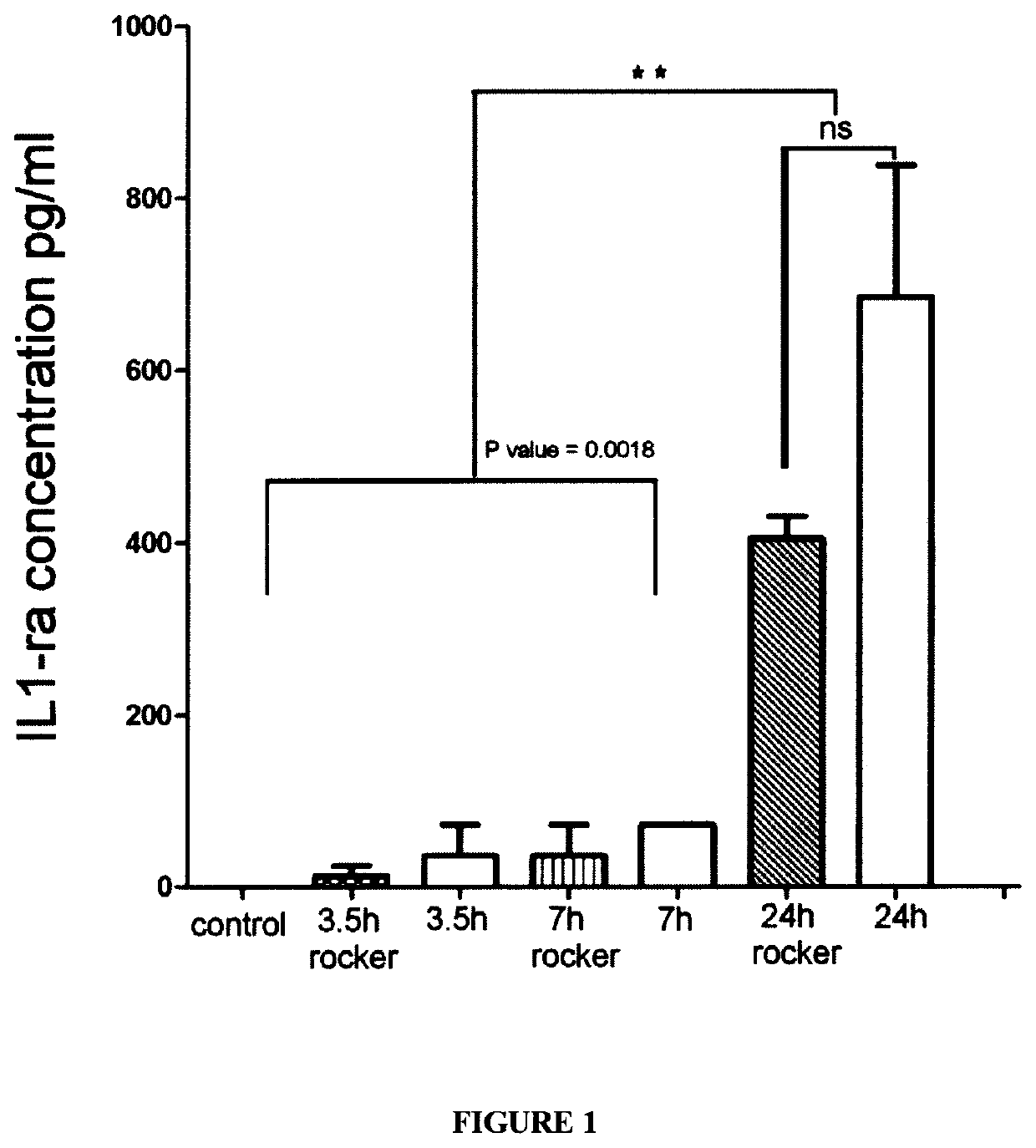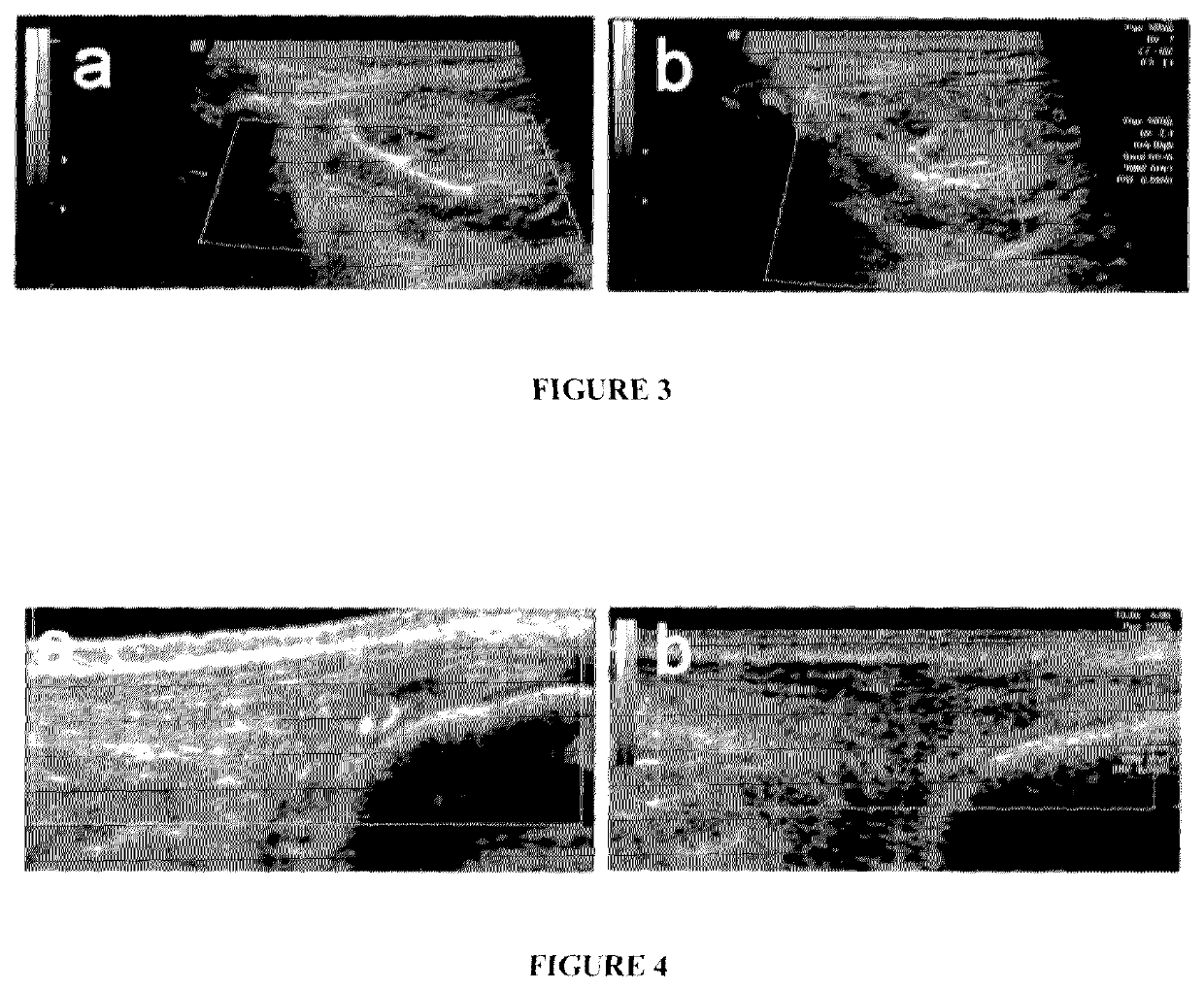Method and composition for producing enhanced anti-inflammatory/ anti-catabolic and regenerative agents from autologous physiological fluid
a technology of autologous physiological fluid and regenerative agent, which is applied in the field of medicine, can solve the problems of inability to manufacture, increase the cost of the final recombinant product, and reduce the biological function or immune response provocation, so as to achieve safe and effective, stable, and cost-effective effects
- Summary
- Abstract
- Description
- Claims
- Application Information
AI Technical Summary
Benefits of technology
Problems solved by technology
Method used
Image
Examples
example 1
n of Extracellular IL-1ra Production Upon Different Culture Conditions
[0103]As graphically shown in FIG. 1, a comparison was carried out of the level of IL-1ra antagonist protein in the human serum samples that were exposed to incubation conditions at different time points including stationary versus rocking incubation. IL-1ra is secreted by the activated blood monocyte, macrophages. Such activation is achieved by contact between blood cells and the internal surfaces of the collection tubes through the use of an agitation process. By increasing the internal surface area exposed to the cellular component, the cell activation process and bioactive molecule secretion can be maximized.
[0104]Peripheral blood from ten healthy male and female volunteer donors (21 to 60 years old) was collected by venipuncture under sterile conditions to sterile 10 ml glass tubes. One tube was manipulated according to a standard procedure with no incubation step (control sample). Samples were incubated for ...
example 2
rts of Patients Diagnosed with Osteoarthritis and Chronic Tendinosis and Treated with the Autologous Composition
Methods and Materials:
[0106]For each patient herein, the anti-inflammatory / anti-catabolic component of the autologous composition comprising IL-1ra and TIMPs was prepared by: collecting blood from the patient; delivering the blood to a tube; incubating the blood at a temperature of from about 37° C. to about 39° C. for about 24 hours; centrifuging the blood to separate the blood into a supernatant component and a cellular fraction; and collecting the supernatant component of the anti-inflammatory component. Likewise, the regenerative component of the autologous composition was prepared by: collecting blood from the patient; delivering the blood to a tube in the presence of about 4% citric acid; centrifuging the blood to separate a platelet-rich plasma component from a whole blood component; collecting the platelet-rich plasma component; and mixing the supernatant component...
example 3
Studies
[0129]Peripheral blood from healthy male and female volunteer donors (21 to 60 years old) was collected by venipuncture under sterile conditions to sterile 10 ml glass tubes. One tube was manipulated according to a standard procedure with no incubation step (control sample). Samples were exposed to different incubation conditions and 500 μl of serum from each sample was used for an assay. Samples were centrifuged at 10,000×g for 10 minutes at 4° C. prior to analysis to remove cell debris and aggregates. BioPlex Pro™ Human Cytokine 27-plex Panel, Human TIMP Magnetic LUMINEX® Performance Assay 4-plex Panel™ (Bio-Rad Laboratories, Canada, LTD) analysis with MAGPLEX® beads was performed in a flat-bottom microtiter plate according to the manufacturer's instructions (available on the internet at bio-rad.com / webroot / web / pdf / lsr / literature / 10014905.pdf).
[0130]Briefly, samples were diluted 1:4 in sample diluent. Standard was reconstituted and diluted in a four-fold dilution series. An...
PUM
| Property | Measurement | Unit |
|---|---|---|
| concentration | aaaaa | aaaaa |
| concentration | aaaaa | aaaaa |
| temperature | aaaaa | aaaaa |
Abstract
Description
Claims
Application Information
 Login to View More
Login to View More - R&D
- Intellectual Property
- Life Sciences
- Materials
- Tech Scout
- Unparalleled Data Quality
- Higher Quality Content
- 60% Fewer Hallucinations
Browse by: Latest US Patents, China's latest patents, Technical Efficacy Thesaurus, Application Domain, Technology Topic, Popular Technical Reports.
© 2025 PatSnap. All rights reserved.Legal|Privacy policy|Modern Slavery Act Transparency Statement|Sitemap|About US| Contact US: help@patsnap.com



